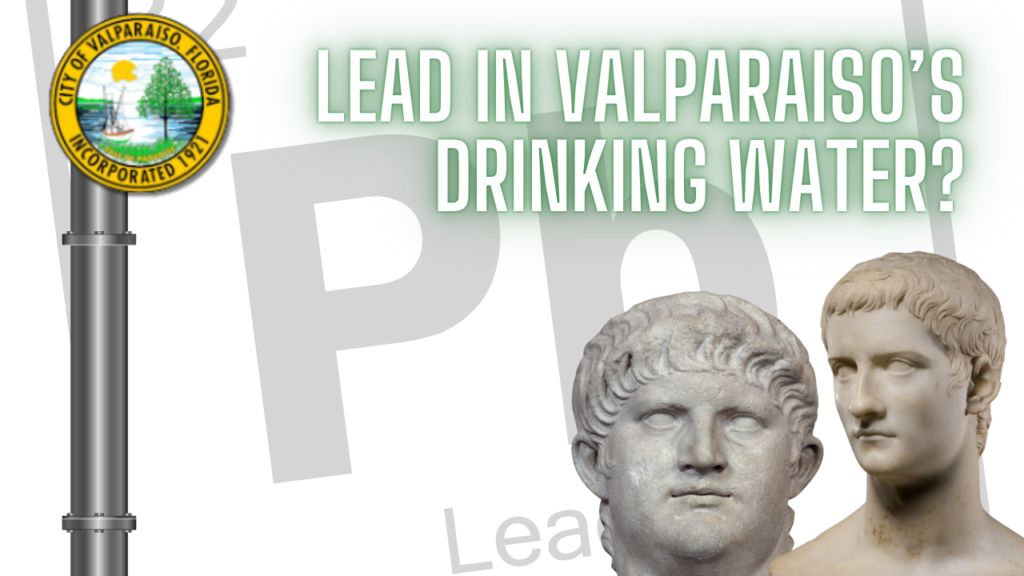
I make it a point not to stand up in government meetings and ask questions or make comments – and If my journalism professors find out, I’ll likely be in trouble.
But when you get a piece of paper in the mail that says you might have lead in your drinking water – you gotta take more direct action, right?
The Heritage Museum was one of an unstated number of businesses and residences that received a couple of sheets of paper from the city in the last month or so warning that some structures might have been or still are hooked up to lead pipes.
For reference – lead has a lot of adverse effects on the human body, including (according to some historians) the nasty effect of making Emporer Nero crazy enough to burn down most of Rome and blame it on the Christians. (Complete list of the damage lead can do on the body here).
I initially thought the city-owned these pipes, but they don’t. The residents are the ones who would own them should they contain lead.
According to Valparaiso Public Works Director Nathan Kelley, either the Federal Environmental Protection Agency or its Florida State equivalent requires the city to make a ‘lead service inventory’ and provide notice to potentially affected residents that their water pipes may have lead in them – or inspect every single pipe in the city’s jurisdiction, including the residential ones that the city doesn’t own. In those cases, the homeowner owns the pipe. According to Kelley, option ‘B’ allows Valparaiso’s bureacrats to send a note to every potentially affected resident that tells them, in part, “that the water pipe (called the service line) that connects to your home or building to the water main is made from an unknown material, but may be lead. Because your service line material is unknown, some or all of the service lines could be made of lead or galvanized pipe that was previously connected to lead.
In short – there are a number of homes that have a chance of having lead in their piping, which, if true, would mean a host of medical conditions flowing out of the faucet every time someone who lives in a home gets water.
City Administrator Carl Scott added that only homes built more than two decades ago have the issue. Newer areas, like Raiders Landing on the north side of town, don’t have a risk of lead because builders stopped lead and galvanized pipe before they were built.
Has this story made a difference for you? Consider making a monthly supporting donation to Mid Bay News so that we can continue to create meaningful local journalism for our community.
Because the home or business owner is responsible for every part of the pipe past the water meter, the city has done its due diligence by sending out the note, according to Valparaiso City Clerk Tammy Johnson and Public Works Director Nathan Kelley.
“Obviously, this caused a great stir,” Kelley said. He added that the ways to check your pipes are about as easy as finding a parking spot within a quarter mile of 3rd Planet Brewing on bonfire night. “there are different ways of checking it out, you can dig your pipe up and look at it and Google search what lead looks like work. There’s scratch tests, there’s magnet tests, there’s all kinds of different things. And if that does not make you feel form and warm and fuzzy on the inside, then yes, testing is available at a cost to the homeowner,” Kelley explained to the crowd of abut ten at the meeting.
Johnson quickly added that this info “was just for public information.”
More helpful information came from the city’s Planning and Zoning Chairman, Bob Bachelor. He said that he took samples of his water to Analytical Services Corporation in Niceville for testing. For $20, they told him that his water was safe to drink.
Another resident, Shelby Simonson, told the gathering anyone with base access can get tested for unhealthy levels of lead in their system on the base, across from where immunizations are performed.
Register or login with Mid Bay News and never get another pop up on our site!